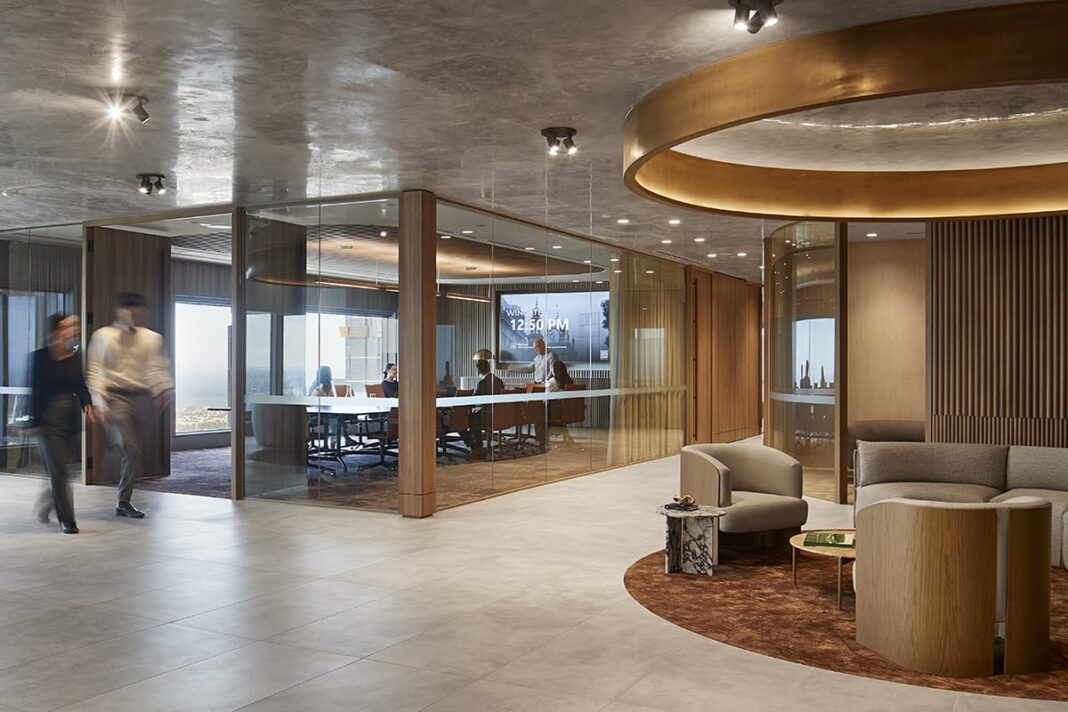In today’s fast-paced work environment, companies are increasingly recognizing that workplace design significantly impacts employee productivity and well-being. A thoughtfully designed workspace not only enhances aesthetic appeal but also fosters creativity, collaboration, and overall employee satisfaction. This article delves into the various aspects of workplace design and how they contribute to a thriving work environment.
The Connection Between Workplace Design and Employee Performance
Understanding Employee Productivity
Employee productivity refers to the efficiency with which employees perform their tasks. It is influenced by various factors, including:
- Work Environment: The physical space where employees work can either enhance or hinder their ability to perform.
- Employee Well-Being: Physical and mental well-being directly affects an employee’s focus, energy levels, and overall performance.
How Design Elements Affect Productivity
Workplace design encompasses various elements, including layout, furniture, lighting, and color schemes. Each of these factors plays a vital role in shaping employee experiences and productivity levels.
Key Elements of Effective Workplace Design
1. Spatial Layout
Open vs. Closed Spaces
The spatial layout of an office can significantly affect collaboration and focus:
- Open Spaces: These layouts encourage communication and teamwork, allowing employees to easily interact and share ideas. However, they can also lead to distractions if not managed properly.
- Closed Spaces: Private offices and cubicles can provide employees with a quiet space to concentrate, but they may hinder collaboration.
Creating a Balanced Environment
A balanced environment often includes a mix of open and private spaces. This allows employees to choose their preferred working environment, promoting both collaboration and focused work.
2. Ergonomic Furniture
Importance of Comfort
Ergonomic furniture, such as adjustable desks and supportive chairs, is crucial for employee comfort. When employees are comfortable, they are less likely to experience fatigue or discomfort, which can detract from productivity.
Benefits of Ergonomic Design
- Reduced Health Issues: Ergonomic design minimizes the risk of musculoskeletal disorders, reducing absenteeism.
- Enhanced Focus: Comfortable seating and desk arrangements help employees maintain focus for longer periods.
3. Natural Light and Ventilation
The Role of Natural Light
Natural light has a profound impact on mood and productivity. Research indicates that access to natural light can improve employee morale and reduce eye strain.
- Maximizing Windows: Offices should aim to maximize natural light through large windows or skylights, creating an inviting atmosphere.
Importance of Ventilation
Good ventilation is essential for maintaining indoor air quality. Proper airflow reduces fatigue and enhances cognitive function, contributing to overall well-being.
4. Color Psychology
Using Colors Effectively
Colors can influence emotions and behaviors, making them a vital aspect of workplace design. Different colors can evoke various feelings:
- Blue: Promotes calmness and focus, ideal for concentration-heavy tasks.
- Green: Represents balance and relaxation, fostering a soothing work environment.
- Yellow: Stimulates creativity and energy, encouraging innovative thinking.
Implementing Color Schemes
A well-thought-out color scheme can create a positive atmosphere that encourages productivity and collaboration.
5. Incorporating Technology
Smart Workspaces
Integrating technology into workplace design enhances efficiency and communication. Key aspects include:
- Collaboration Tools: Providing tools like smartboards and video conferencing systems facilitates communication among team members.
- Remote Work Solutions: Technology that supports remote work options can help maintain productivity, even outside the office.
Benefits of Technology Integration
- Streamlined Workflows: Technology simplifies processes and enhances collaboration.
- Increased Engagement: Engaging tools keep employees connected and motivated.
The Impact of Workplace Design on Employee Well-Being
1. Mental Health Benefits
Reducing Stress Levels
A well-designed workspace can reduce stress levels through:
- Calming Environments: Incorporating natural elements and color psychology creates a peaceful atmosphere.
- Relaxation Spaces: Designated quiet areas provide employees with a space to unwind and recharge.
Encouraging Work-Life Balance
Workplace design that supports flexible working hours and environments contributes to a healthier work-life balance, which is crucial for overall well-being.
2. Fostering Collaboration and Community
Promoting Team Interaction
Collaborative spaces encourage social interactions among employees, fostering a sense of community.
- Breakout Areas: Informal meeting spaces facilitate spontaneous discussions and brainstorming sessions.
Building Relationships
Encouraging social interactions through design strengthens relationships among team members, contributing to a positive work culture.
3. Enhancing Employee Engagement
Creating an Inviting Atmosphere
An engaging work environment that prioritizes comfort and aesthetics can increase employee engagement.
- Personalization Opportunities: Allowing employees to personalize their workspaces can make them feel valued and connected to their environment.
Recognizing Employee Contributions
Design elements that highlight employee achievements and contributions can boost morale and engagement.
FAQs
1. How does workplace design affect employee morale?
Workplace design affects employee morale by creating a comfortable, functional, and visually appealing environment that enhances satisfaction and productivity.
2. What are the key elements of effective workplace design?
Key elements include spatial layout, ergonomic furniture, natural light, color psychology, and technology integration.
3. How can natural light improve productivity?
Natural light enhances mood, reduces eye strain, and increases energy levels, all contributing to improved productivity.
4. What is color psychology, and how does it apply to workplace design?
Color psychology studies how colors affect emotions and behaviors, and it can be used in workplace design to create a positive atmosphere.
5. Why is ergonomic furniture important?
Ergonomic furniture promotes comfort, reduces health issues, and enhances focus, leading to improved productivity.
Conclusion
Workplace design significantly impacts employee productivity and well-being. By prioritizing elements such as spatial layout, ergonomic furniture, natural light, color psychology, and technology integration, companies can create environments that enhance employee satisfaction and performance. Investing in thoughtful workplace design is not just beneficial; it is essential for fostering a positive and productive work culture.


